Original title: "ArkStream Capital: Game of Thrones Fusion of WLFI and CEX-DEX"
Original source: ArkStream Capital

Industry Overview
At the beginning of 2025, the cryptocurrency market kicked off amid a complex sentiment of optimism and uncertainty. The industry once had multiple expectations for the New Year: the potential dividends of the Fed's monetary policy shift, the secondary outbreak of the AI technological revolution, and the "crypto-friendly" regulatory framework promised by the new US administration are all seen as catalysts for industry breakthroughs. However, when the dust settled in the first quarter, the market presented a clear picture of "strong fluctuations in macro narratives and deep dormancy in micro innovation".
The global macroeconomic has become the core variable that dominates the market rhythm. The Federal Reserve struggles to weigh the recurrent inflation and recession risks. Although the unexpected recession rate cut expectation in March briefly boosted risk appetite, it failed to offset the liquidity panic caused by the bursting of the US stock valuation bubble; and the Trump administration fulfilled its campaign promises, promoting Bitcoin’s national strategic reserves and digital assets strategic reserves, as well as the implementation of the Digital Asset Supervision Clear Act, releasing structural benefits to the industry, but the parallelism of policy dividends and SEC’s loose enforcement easing has also intensified the market’s controversy over the “cost of compliance transformation.”
Bitcoin encountered a 30% deep pullback after breaking through the historical high of US$100,000 again in January, exposing the phased profit margin of the market funds on the "halving narrative"; the overall performance of the altcoin market is flat, but the birth and delivery of funds such as RWA and user portals and user incremental products still injects underlying innovation momentum into the industry. It is worth noting that CEXs such as Binance accelerate the layout of the DEX ecosystem, and promote users to seamlessly access to dApps scenarios such as DeFi through on-chain liquidity aggregation and account abstraction technology, and allow CEX users to directly trade and sell DEX assets in the account for the first time. This paradigm migration of "centralization and decentralization" may become a key fulcrum for growth and breakthroughs in the next cycle.
Macroeconomic environment and impact
In the first quarter of 2025, the U.S. macroeconomic environment had a profound and complex impact on the cryptocurrency market. For the cryptocurrency market, starting from the spot of ETFs through BTC, the positive correlation between the entire crypto market and US stocks has become increasingly stronger, and the trend of the Nasdaq directly determines the direction of the cryptocurrency market to a certain extent. Although BTC was named "digital gold" in the early years, cryptocurrencies are currently more inclined to risky assets rather than safe-haven assets, and are more affected by market liquidity. ArkStream will continue to pay attention to changes in the macro economy in the future.
The core of the macro economy lies in the balance between inflation and the strength of the economy. The market trades the expectations for the future: if inflation is too high or the economy is too strong, the Federal Reserve will tend to postpone interest rate cuts, which is not good for the capital market; on the contrary, if the economy performs too weak, it may trigger recession risk, which is also unfavorable to market confidence and capital flows. Therefore, the macro economy needs to find a delicate balance between strength and weakness in order to provide a favorable environment for the capital market. The DOGE department has laid off a large number of government agency staff, which directly led to an increase in the unemployment rate. At the same time, Trump's tariff policy has exacerbated inflationary pressures and made the U.S. economy recession possible by directly pushing up the prices of affected goods and the costs of related service industries.
This series of policies has increased market instability factors, leading to an increase in capital market volatility. Considering the high gains brought by the 2024Q4 quarter election market and the drawdown risks caused by the potential huge fluctuations in the market in the short term, ArkStream Capital narrowed its investment plan in the 2025Q1 quarter, focusing more time and energy on the business exploration and channel expansion of OTC strategies.
However, considering that such policies may not be simply economic regulation methods, but rather the Trump administration aims to increase the bargaining chips for political negotiations with other countries, or deliberately create chaos to achieve a special political and economic purpose, that is, to force the Federal Reserve to quickly cut emergency defensive interest rates by creating signs of economic recession, so as to achieve a win-win situation in alleviating US national debt problems and stimulating economic growth and capital market performance, we are still optimistic about the performance of the subsequent cryptocurrency market.
In the first quarter, the cryptocurrency market's response to macroeconomic data showed a high degree of sensitivity. The following is a month-by-month analysis of market performance in January, February and March.
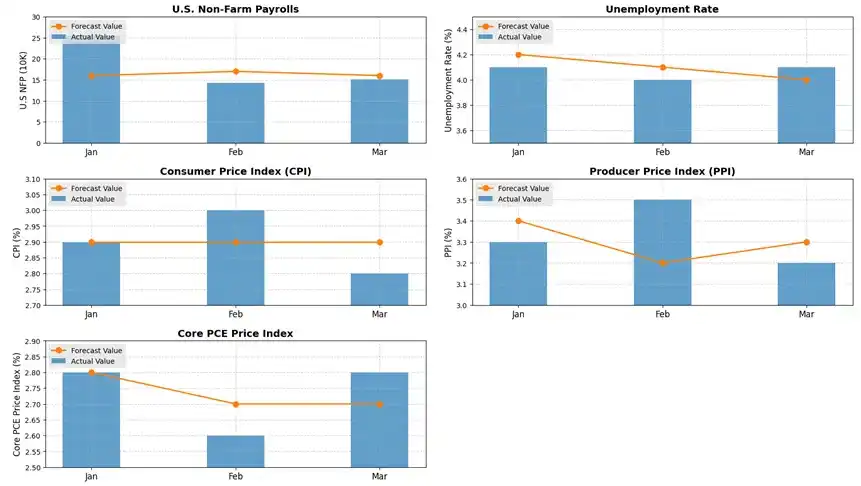
In January, U.S. macroeconomic data was strong overall, but market response was relatively stable. On January 10, the non-farm employment population data after the December season was released, with an expected value of 160,000 and an actual value of 256,000, which significantly exceeded market forecasts; the December unemployment rate announced on the same day was 4.1%, lower than the expected 4.2%, further confirming the strong performance of the economy. On January 14, the December PPI annual rate was 3.3%, slightly below the expected 3.4%, which was seen as a signal that inflationary pressures have been alleviated in the short term.
However, the December unrevised CPI annual rate of 2.9% was announced on January 15, which was in line with expectations but increased by 0.2% from the previous month, starting to raise concerns about rising inflation and delays in interest rate cuts. On January 31, the December core PCE data was 2.8%, meeting expectations and did not cause significant disturbances to market expectations. Overall, January data failed to cause significant volatility in the cryptocurrency market, with the strong job market and the stable inflation data keeping asset prices such as BTC relatively stable.
Entering February, the cryptocurrency market fluctuated violently due to the deviation between macroeconomic data and expectations. On February 7, the non-farm employment population data after the seasonal adjustment in January was 143,000, lower than the expected 170,000; the January unemployment rate released on the same day was 4.0%, lower than the expected 4.1%, and the employment market performance was unclear, which intensified the uncertainty in the market in the short term. On February 12, the January unrevised CPI annual rate was announced at 3.0%, higher than expected 2.9%, and inflation continued to rise and exceeded expectations, causing market confidence in rate cuts to fall to freezing point. Traders generally bet that interest rate cuts may only happen once in December this year, which has dealt a huge blow to market sentiment, with BTC falling 2,500 points in 15 minutes after the data was released, a drop of 2.66%.
The next day, the January PPI annual rate was 3.5%, higher than expected by 3.2%, further exacerbating market concerns about a lowered rate cut. This was seen as the fuse for weakening buying power, and in the following half month, BTC fell about 20%, with a drop of 20,000 points. It was not until February 28 that the core PCE price index in January was announced at 2.6%, lower than expected that the market could stabilize and form a bottom. It is worth noting that the weak performance in the financial and medical services segments in the PPI data has provided an upfront signal for the decline in PCE.
In March, macroeconomic data improved overall and market sentiment rebounded, but the core PCE's exceeding expectations once again triggered volatility. On March 7, the February seasonally adjusted non-farm employment population data was released at 151,000, slightly lower than the expected 160,000; the February unemployment rate released on the same day was 4.1%, higher than the expected 4.0%, indicating a slight weakness in the employment market. On March 12, the unseasonally adjusted CPI annual rate in February was 2.8%, lower than the expected 2.9%; on March 13, the annual rate of PPI in February was 3.2%, slightly lower than the expected 3.3%.
This series of data shows that the economy is operating on a stable basis, inflationary pressure has eased, and the process of interest rate cuts is expected to accelerate. Affected by this, the cryptocurrency market experienced a brief rebound in the following 10 days. However, the annual rate of the February PCE price index, released on March 28, was 2.5%, in line with expectations, but the core PCE was 2.8%, higher than the expected 2.7%. The market saw a significant decline in the first 10 hours of the data release due to concerns about core PCE exceeding expectations, showing continued sensitivity to inflation data.
To sum up, in the first quarter of 2025, the impact of U.S. macroeconomic data on the cryptocurrency market was significant and volatile. The economy was strong in January but the market response was flat, inflation exceeded expectations in February and interest rate cuts sharply, BTC fell sharply, and improvements in economic data in March led to a brief rebound, but core PCE exceeded expectations triggered a decline again. Trump's tariff policy has increased market uncertainty by aggravating inflationary pressure and may become an important factor in forcing the Federal Reserve to adjust its policies. Looking ahead, the trend of the cryptocurrency market will still rely heavily on macroeconomic data and the Fed's policy trends. Investors need to pay close attention to the dynamics of inflation and employment data to accurately grasp market trends.
Trump administration's cryptocurrency policy and impact
Trump signed an executive order in March 2025 to establish a strategic Bitcoin reserve, funding mainly from about 200,000 Bitcoins (worth about $18 billion) in criminal or civil confiscations, and banned the government from selling the reserved Bitcoins. The move aims to promote Bitcoin into a "sovereign reserve asset", enhancing its legitimacy and liquidity, while promoting the U.S. leadership in the digital asset field. Although the price of Bitcoin soared by more than 8% in the short term and market confidence increased, the market then believed that reserves only rely on confiscated assets and no new purchase plans, and the price fell rapidly.
In the long run, the move may trigger other countries to follow suit and push Bitcoin to become an international reserve asset. In addition, a series of non-bitcoin digital assets also have the possibility of being included in the digital asset reserve library. This marks the transformation of cryptocurrencies from marginalized assets to national strategic tools. Despite the short-term market response, its long-term impact may reshape the global financial system: on the one hand, it promotes Bitcoin to become a mainstream reserve asset, and on the other hand, it intensifies competition among sovereign countries in the field of digital finance.
In terms of regulation, after taking office, Trump promoted the firing of SEC Chairman Gary Gensler and established a crypto assets working group to clarify the standards for the division of securities and non-securities tokens, and terminate lawsuits against companies such as Coinbase. In addition, the controversial accounting standards SAB 121 were abolished to reduce the financial burden of the enterprise. The regulatory environment is significantly loose, and institutional investors are accelerating their entry; traditional financial institutions such as banks are allowed to carry out crypto custody business to promote the industry compliance process. This series of regulatory policies has changed the ecology of the US crypto and financial industry by loosening rules, reconstructing frameworks and promoting legislation. In the short term, policy dividends may accelerate technological innovation and capital inflows; but in the long run, we need to be wary of the complexity of systemic risks and global regulatory game. In the future, the effectiveness of policy implementation will depend on multiple variables in judicial challenges, economic cycles and political games.
In terms of stablecoins development, the Trump administration has established a federal regulatory framework for stablecoins, allowing stablecoin issuing institutions to access the Federal Reserve's payment system, and explicitly prohibiting the Federal Reserve from issuing central bank digital currency (CBDC) to maintain the innovation space for private cryptocurrencies. The application of stablecoins in cross-border payments has accelerated, and the path of internationalization of the US dollar has expanded; the market share of private stablecoins has expanded, and the integration with the traditional financial system has deepened.
In terms of tariff policies, in February 2025, Trump signed the "Memorandum of Reciprocal Trade and Tariffs", requiring the tariff rates of each U.S. trading partners to be consistent with the United States and impose tariffs on countries that implement the VAT system. This memorandum is a framework document for U.S. trade policy adjustments, aiming to reduce U.S. trade deficit and resolve trade inequality and imbalances. Subsequently, Canada, Mexico, the EU and others quickly took countermeasures, resulting in a spiral rise in global tariff barriers for the first time. On April 2, 2025, Trump signed an executive order on reciprocating tariffs to further refine and implement the policy direction in the February memorandum. The order, with the aim of reducing the U.S. trade deficit, promoting manufacturing backflow, and protecting U.S. economy and national security, requires higher reciprocal tariffs on countries with the largest trade deficit with the U.S. This move triggered a rapid countermeasure from the major affected countries, especially China took corresponding countermeasures as soon as possible, resulting in the two sides' economic and trade relations officially entering a stage of serious differences and friction.
Under the influence of such tariff policies, global trade costs will inevitably increase and the scale of international trade may shrink. Production costs have increased significantly, supply chain reconstruction has accelerated, and corporate investment willingness has declined. The most important thing is that the United States will have to face pressure from imported inflation. The Federal Reserve's monetary policy is in a dilemma, and expectations of interest rate cuts have been postponed. Tariff policies also force companies to transfer production to Latin American countries such as Mexico, but infrastructure and labor shortages in the United States have hindered the return of manufacturing. Industry such as automobiles and electronic products that rely on global supply chains have been hit hard, and the profit pressure of multinational companies has increased, and the stock prices of US technology giants have fallen back.
Emerging markets face challenges in taking over industrial chain transfers, and it is difficult to fully make up for the demand gap in the United States in the short term. The tariff war also weakened the trust of the US dollar as an international trade settlement currency, resulting in a decline in the price of ten-year government bonds and a corresponding increase in yields. Behind this is also the consideration of the Trump administration's plan to reduce debt spending and borrowing costs, and some countries have therefore begun to explore ways to de-dollarize. In terms of financial markets, global financial markets, including US stocks, A-shares, Nikkei, etc., generally fell sharply, and market liquidity is facing tremendous pressure.
Trump's cryptocurrency policy has boosted market confidence and attracted capital inflows in the short term through regulatory loosening and strategic reserves, but in the long run, we need to be vigilant about the risk of centralized computing power and repeated policies. Although the tariff policy is named "US First", it has led to fragmentation of the global trade system, pushing up inflation and aggravating expectations of recession, forcing funds to flow from risky assets to safe-haven assets such as gold. These two major policies jointly highlight the contradiction and game between the United States in the transformation of the digital economy and the real economy.
Since its launch in 2024, the Trump family-backed DeFi project World Liberty Financial (WLFI) has had a multi-dimensional impact on the cryptocurrency industry with its political background and capital operations. WLFI is regarded as the "barometer" of the Trump administration's crypto-friendly policies. Its asset allocation and strategic cooperation are interpreted by the market as "presidential selection portfolio", attracting investors to follow the trend and layout, which may intensify the market's dependence on "political narratives" in the short term and promote price fluctuations of specific tokens. In the long run, we need to be vigilant about policy repetitive risks. At the same time, WLFI's USD1, the US dollar stablecoin launched in March 2025, emphasizes compliance and institutional custody. If it successfully penetrates cross-border payments and DeFi scenarios, it may weaken the market share of existing stablecoins, while promoting the digitalization of the US dollar and consolidating the US dominance in the global financial system.
In addition, WLFI's operation benefited from policy adjustments from the Trump administration, providing a scale board for similar projects, lowering industry compliance thresholds, and attracting traditional financial institutions to participate in crypto businesses, but may lead to market bubbles due to regulatory arbitrage.
In terms of long-term strategic value, WLFI has a heavy holding of various cryptocurrencies, such as BTC, ETH, AAVE, ONDO and ENA, which echoes the "strategic crypto reserve" policy promoted by the Trump administration. This layout may guide more capital to focus on cryptocurrency assets, thereby promoting digital asset reserves to become the core narrative of the next cycle. At the same time, WLFI's operating model provides reference cases for "political-business linkage" for other projects. In the future, more crypto projects relying on political forces may appear, but they need to balance compliance with decentralization principles.
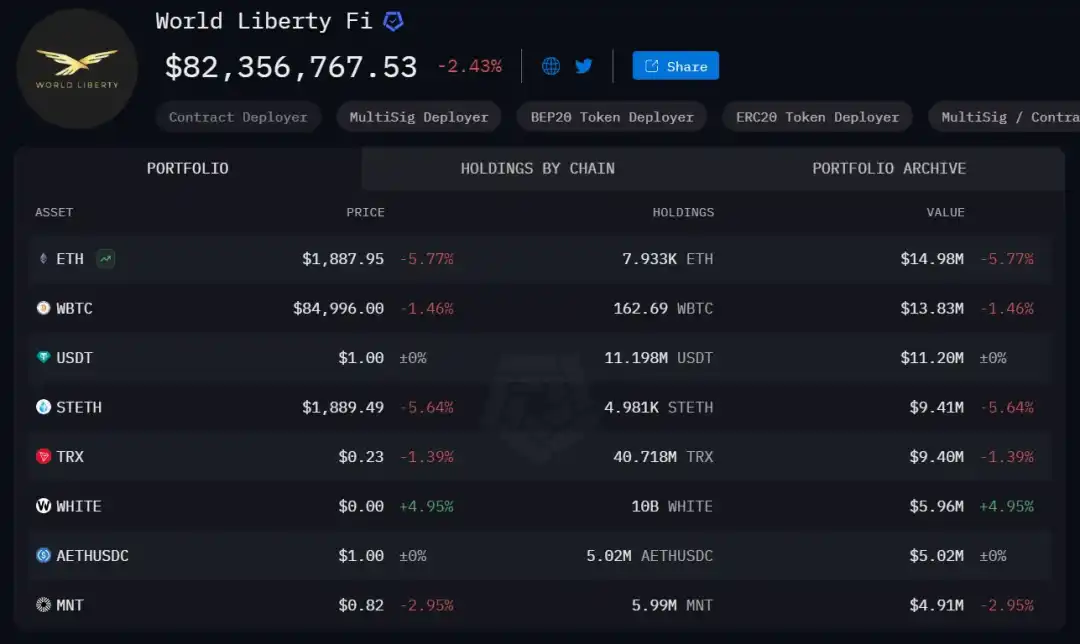
To sum up, WLFI has a double-edged sword effect on the cryptocurrency industry. On the one hand, it accelerates the compliance process through political empowerment, promotes the integration of DeFi and institutional capital, and explores the global application of US dollar stablecoins; on the other hand, relying on policy dividends may lead to market bubbles, opaque interest distribution may trigger a trust crisis, and poor project execution may become a negative case in the industry. In the future, we need to focus on the progress of WLFI's product implementation, the market acceptance of USD1, and the supporting role of the Trump administration's policy coherence.
The connection and fusion of CEX and DEX
Trading platforms and Web3 wallets are important traffic portals to enter the crypto world. Users often use fiat currency to recharge assets on mainstream trading platforms, and conduct financial activities such as cryptocurrency transactions, lending, and financial management, or interact with various dApps with the help of Web3 wallets in each public chain. In the past, the two were clearly bounded. Because the use threshold and education cost of Web3 wallets are high, ordinary users often start their Web3 journey from trading platforms, and centralized trading platforms retain users through more mature and circulating services than decentralized dApps. Especially in 2025, the trading platform business is more mature than the previous cycle. For example, Binance announced that the number of users reached 200 million in 2024, which doubled compared to the previous cycle. In contrast, Web3 native On Chain users are limited by many factors, and on-chain daily active users are only about 10% of those of centralized trading platforms.
Since 2023, the trading platform has entered the Web3 Wallet product market with the accumulation and precipitation of its own trading platform wallet asset management. Among them, OKX Wallet attracts many users at the product level, and successfully wins over a large number of users with its excellent product experience, such as asset management, on-chain interaction and transaction optimization. CEX takes advantage of its own advantages in the Wallet module of the trading platform, such as building different public chains RPCs, etc., to create more complete and excellent wallet products, achieving the attraction and retention of users. However, OKX Wallet is essentially no significant difference from traditional Web3 Wallet. It is just a better and more convenient multi-chain wallet, and does not break the threshold for using native Web3 Wallets.
Binance Web3 Wallet is closely linked to the trading platform account. In the early stage, it supports the rapid reception and transmission between the site assets and the Web3 wallet, reducing users' security concerns when using the Web3 wallet and providing guarantees from the trading platform level. At the same time, Binance Web3 has jointly launched multiple IDOs for ordinary users in the ecosystem to attract more users on site to participate and learn on-chain knowledge. In addition, its latest wallet function allows users on-site to directly purchase Alpha series on-chain assets, realizing the function of directly purchasing on-chain assets from within CEX, completely breaking the traditional boundaries between CEX and DEX.

Data source: Dune, https://dune.com/lz_web3/wallet-war
Unlike the mainstream CEX-led Web3 Wallet, native crypto projects can focus on the actual and urgent needs of on-chain users in the field of Wallet. Particle Network has launched UniversalX with its years of accumulation in MPC and account abstraction technology to capture the unified account demands created by multi-chain transactions. This product integrates wallets and trading platforms, effectively solving the problems of asset transfer and transactions in different chains, helping users to achieve convenient management and efficient transactions of assets in a multi-chain environment. With this innovative product, Particle Network has gained good reputation and wide recognition in the market.

Source: Dune
The integration of CEX and DEX is not only a technological innovation, but also a milestone in the cryptocurrency market from "opposition and separation" to "coordinated symbiosis". While this change improves efficiency and inclusion, it also creates new challenges in regulation, security and governance. In the future, whoever can better balance centralized efficiency with decentralized asset security and autonomy will be able to dominate the evolution of the next generation of financial infrastructure.
Project investment

SOON
Project Introduction
Soon reconstructs and launches its self-developed Solana virtual machine, Soon SVM, by removing voting governance mechanisms, improving dApps efficiency, integrating data availability layers, and introducing fraud proof mechanisms, providing efficient and high-performance scaling solutions for mainstream blockchains such as Bitcoin and Ethereum. Based on this, Soon launched InterSOON to support interoperability between different chains and integrates Jump's high-performance Solana client Firedance. Soon will launch its own SVM network SOON based on the SVM framework and deploy it to multiple public chains such as Bitcoin, Ethereum, TON and BSC. With InterSOON internally providing liquidity pools and interoperability capabilities, Soon enables seamless transfer of assets and data between different blockchains.
Why invest in Soon
At the moment when the blockchain ecosystem is booming, the pursuit of high performance has always been one of the core driving forces for technological innovation. The existing fraud-proof Rollup layer two solution cleverly separates the execution layer from the data available layer, and different components can perform their own duties, laying a solid foundation for improving overall performance. With the increasing maturity of DA technologies such as EigenDA and Celestia, a high-performance execution layer is particularly critical. Among many projects exploring high-performance execution layers, Monad, MegaETH, etc. focus on the research and development of high-performance EVMs, while Movement uses MoveVM to achieve breakthroughs. For Solana, which carries the huge daily active users and transaction volume on the chain, its SVM is also an extremely successful execution layer choice.
However, native SVM has had some limitations before, such as not supporting DA integration, which is relatively inefficient and incompatible with fraud proofs, making it difficult to use directly as an execution layer. Soon accurately understands this pain point. Through the development of Decoupled SVM, it successfully added fraud proof support to SVM, achieving efficient DA integration, and at the same time optimizes Merkle technology, greatly improving security and scalability, and is consistent with Ethereum's MPT (Merkle Patricia Trie). This reflects Soon's deep strength in the technical level, and also makes it occupy a place in the high-performance blockchain track, and brings new technological possibilities and application scenario expansion to the Solana ecosystem and the entire blockchain industry.
Looking back on the past multi-cycle blockchain development history, Solana has built a huge and powerful ecosystem with its tenacious vitality. The abundant on-chain funds and numerous active users provide a solid foundation for Solana's continued development. As a key component of Solana, SVM is not only the core of its technical architecture, but also a symbol of Solana's ecology.
Relying on SVM, the Soon project can provide expansion support for other public chains, revitalize more on-chain funds, and attract excellent Solana ecological projects to be built. For developers, the high-performance SVM execution layer and mature DA integration solutions provided by Soon will greatly reduce development difficulty, improve development efficiency, and enable them to focus more on the development of innovative applications, thereby further enriching the SVM ecosystem and promoting the entire blockchain industry to develop forward.
The development speed of Soon's team is impressive, and it took only six months from the start of the project to the achievement of phased results. During this period, they not only successfully launched SOON Devnet and Testnet, but also successfully launched Mainnet and svmBNB. This series of rapid and solid progress fully demonstrated the team's outstanding R&D capabilities. In addition, Soon's Co-builders Round has attracted the participation of many well-known project founders, such as Solana Labs' Anatoly Yakovenko, Celestia's Mustafa AI-Bassam, etc. This is not only a high recognition of Soon's technical solutions, but also a strong endorsement of its future development.
Soon adheres to the community-oriented token economy concept and integrates community first throughout the project development. This concept deeply binds Soon tokens to the user community, allowing the community's power and demands and project growth to form a synergy. In the blockchain industry, the community is one of the most valuable assets of the project. An active and loyal community can bring continuous attention, financial support and valuable feedback to the project. When community members actively participate in project governance, ecological construction and other activities, their efforts will affect the direction and value of the project.
The strategic investment in Soon is a key step in ArkStream Capital's strategic layout in the Solana ecosystem and SVM fields. ArkStream Capital believes that the prosperity of Solana and its SVM ecosystem is one of the trends that cannot be ignored in the blockchain industry. ArkStream Capital looks forward to working closely with Soon to jointly promote the continuous innovation and development of blockchain technology and help the SVM ecosystem move towards a more prosperous future.
Research Report
ArkStream Capital: 4 strategic upgrades behind Particle: https://mp.weixin.qq.com/s/X5GbpL_yOsnAYtAT9PC6Bw
ArkStream Capital: The year of crypto breaking the deadlock, welcome the carnival 2025: https://mp.weixin.qq.com/s/BSU6CeTZB_dXgvCGX9WbPw
Hosting and attending events
Offline activities
Hosted by [Hong Kong Consensus] The AI Agent Evolution: https://mp.weixin.qq.com/s/lSw-4YJqTxYXitIY2C6AXg

As a judge, I participated in the [Hacker House Demo Day] hosted by Aptos' Movemaker community: https://x.com/MovemakerCN/status/1903080919780692029

Discuss the future of VC with Spartan, Galaxy, Maelstrom, Reciprocal and other funds

Online activities
As a guest, attending SOON AMA [Enlightenment of community priority and fair distribution]: https://x.com/soon_svm/status/1879911091456901512













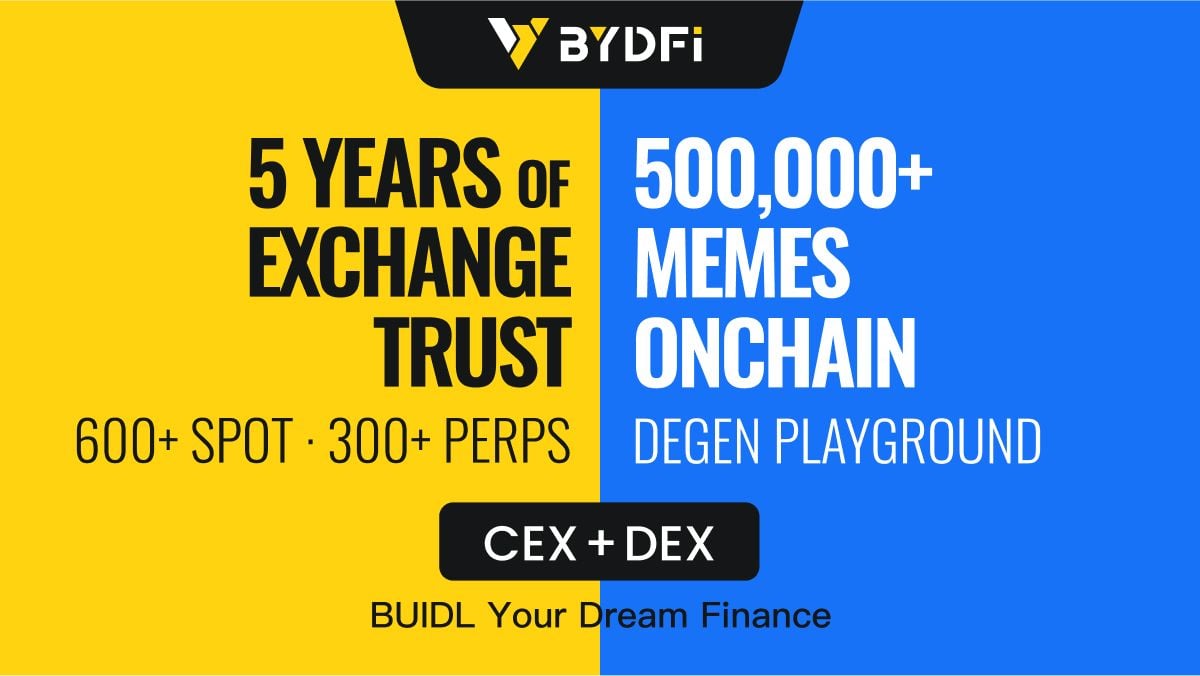
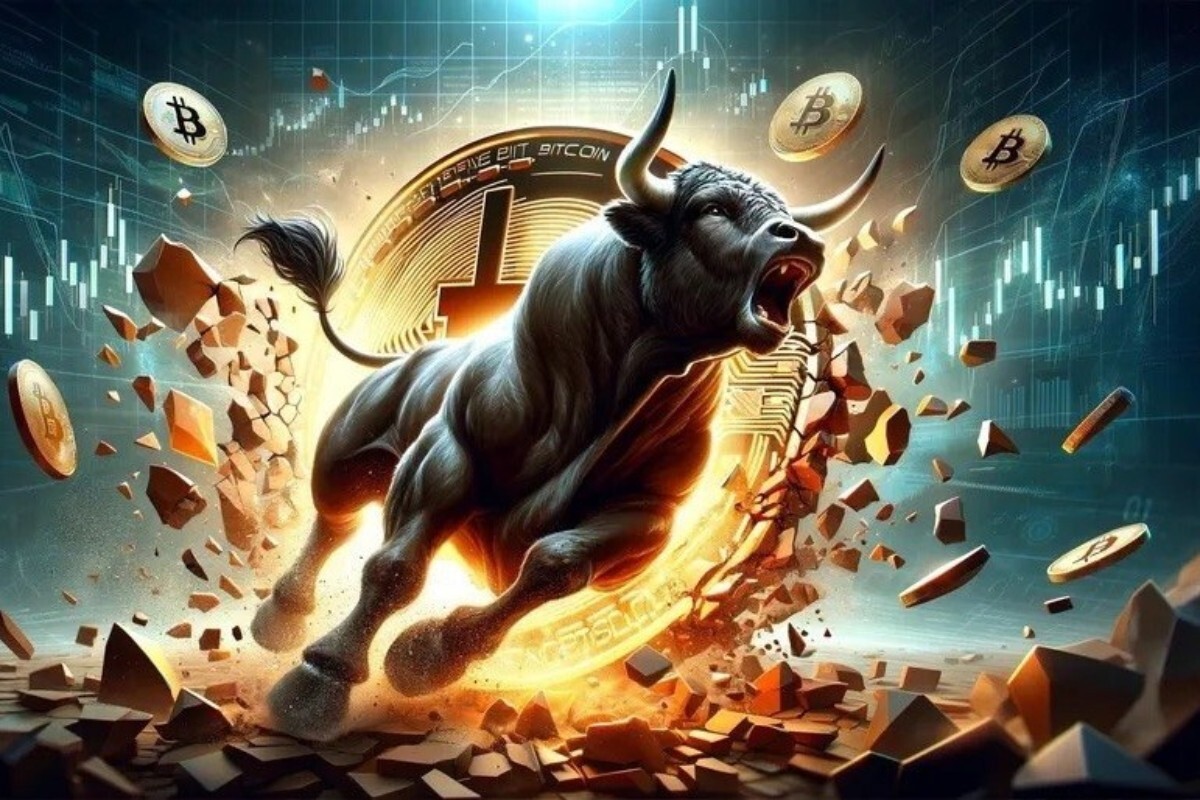
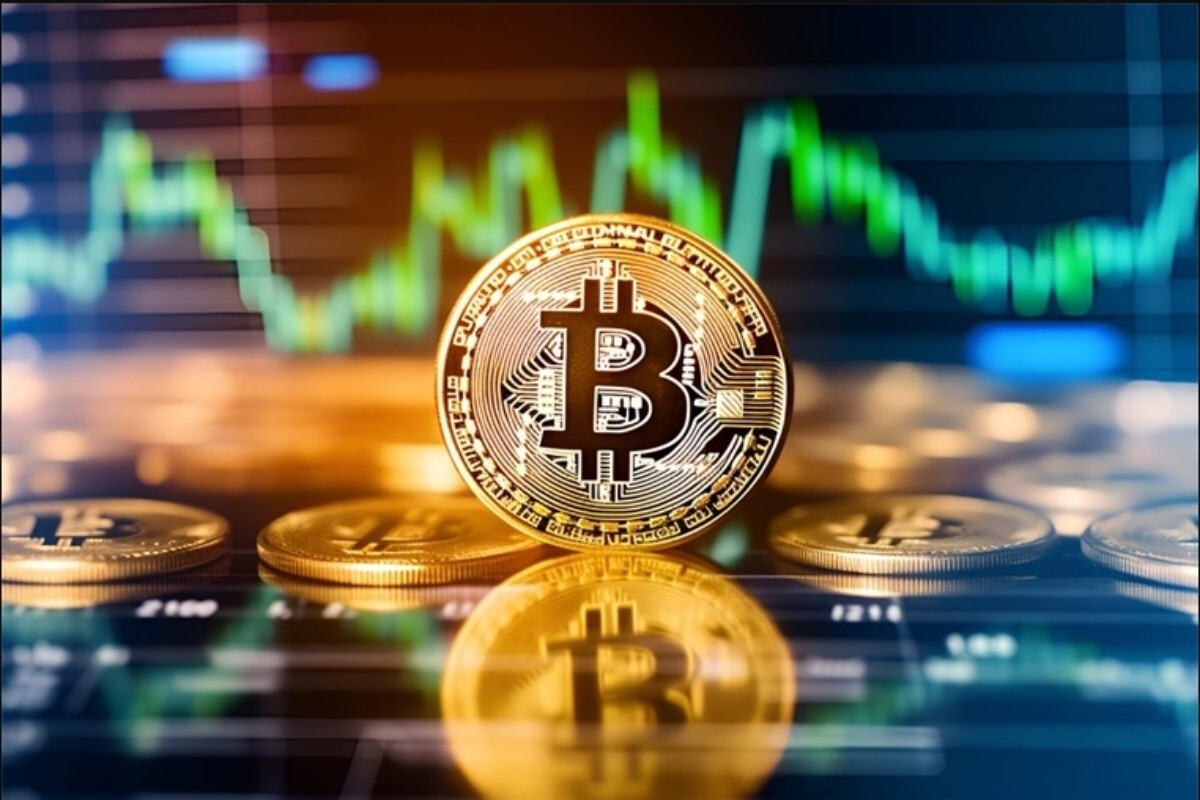

No comments yet